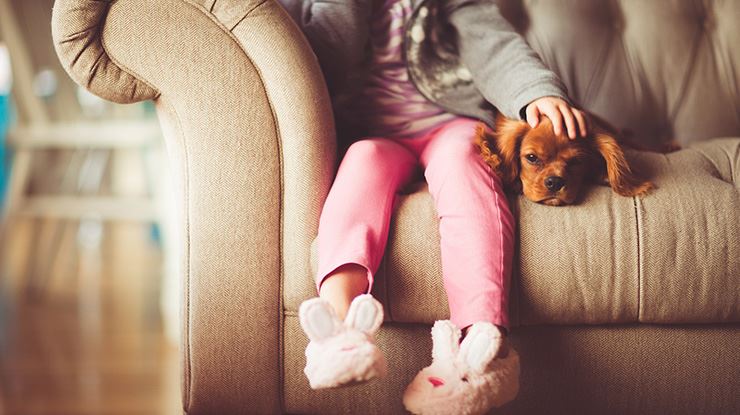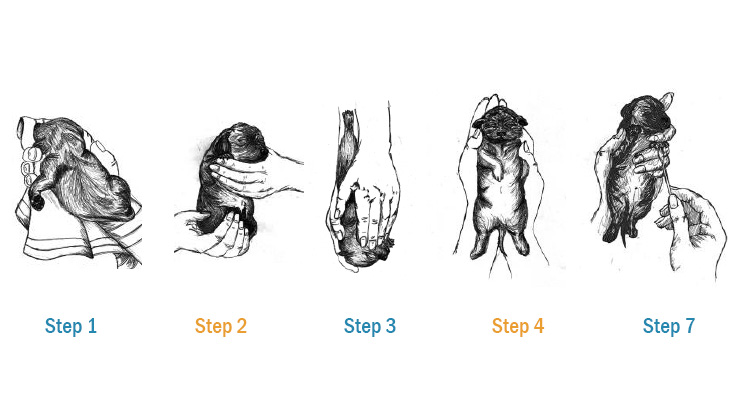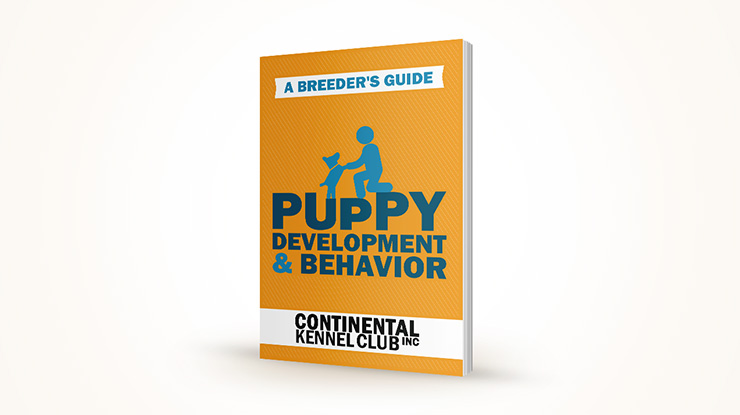
Puppy Development and Behavior: Healthy Stress (Free Book!)
Introducing a neonatal pup to minute, easily manageable amounts of stress can prime the puppy’s brain to better cope with and rebound from adulthood stresses.
The amount of stress that we’re talking about is a minimal, yet it is more than pups would naturally encounter. Puppies can easily rebound from it, and when they do, the process causes the brain and nervous system to undergo an adaptive change in the dog’s pituitary-adrenocortical system, thereby preparing the pups to cope with stress later in life.
Small amounts of daily handling, coupled with mild, neurologically stimulating exercises from birth to five weeks, will have marked, long-term effects and benefits, including: accelerated maturation of the nervous system, accelerated hair growth and weight gain, enhanced development of motor functions and problem-solving skills, earlier opening of eyes, increased confidence, increased desire to explore surroundings, and socially dominant (not aggressive) behavior.

Neonate Handling Routine
- Thermal Stimulation
Place pup on a damp, room-temperature or cool wash cloth for (three to five seconds).
- Head Up Stimulation
Hold puppies with head facing up, tail to the ground (three to five seconds).
- Head Down Stimulation
Hold puppies with their tails up and heads down (three to five seconds).
- Supine Stimulation
Hold puppy’s tummy up, cradled in arms (three to five seconds).
- Prone Stimulation
Tummy down (three to five seconds).
- Balance Stimulation
Place a square of cardboard over a marble, and then place the pups on cardboard sheet.
Gently and slowly press each corner of the cardboard to the ground, one-at-a-time (three to five seconds).
- Tactile Stimulation (balance, footing, and touch):
Gently, briefly handle the puppy how a veterinarian, child, or groomer would
After you have successfully performed the seven controlled-stress exercises through the neonate period, continue handling the puppies. The eyes and ears should be open, and the puppies should be getting around better than they were at the beginning of the neonatal period (you should now be seeing a wobbly walk as opposed to a belly-dragging crawl). You can also begin to add things to the environment, such as a small television with the volume turned low, to get them used to living with noise in the background. Making noise from another room (gradually increasing the volume) will also help to reduce sound-sensitivity.
If you are a breeder who found these tips helpful, we’ve got much more in store for you! CKC has put together an eBook with loads of helpful advice for breeders who want to produce the best possible puppies, and the best part is that it’s absolutely free! Simply download the eBook provided below and learn how you can make your litters better than ever.











